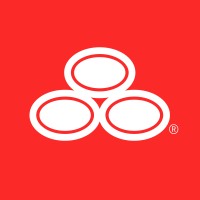State Farm & USAA to Test a Blockchain Solution
State Farm and USAA know how important it is to invest, innovate and build for the future. During the 2019 Dig In Conference, the two insurance companies announced a joint subrogation solution, and are now using real claims data to test how blockchain technology can improve the speed of the auto claims subrogation process.
Subrogation is typically the last phase of an insurance claims process, when one insurance company recovers claim costs it paid to its customer for damages from the at-fault party’s insurance company, which includes its customer’s deductible.
“Today, subrogation is a relatively manual, time-consuming process often requiring physical checks to be mailed on a claim-by-claim basis between insurers. In 2018 alone, the total amount of dollars demanded and issued through the subrogation process was over $9.6 Billion for all insurance carriers. You can imagine the time and resources required to complete these transactions.” – Mike Fields, Innovation Executive, State Farm.
Companies across many industries are using blockchain technology to securely store data and manage transactions. USAA and State Farm are testing how blockchain can be used to gain efficiencies in the subrogation process by securely and automatically compiling all subrogation payment amounts, netting the balance, and facilitating a single payment on a regular basis between insurers.
“The blockchain solution we are working on has many potential benefits. It helps us automate a manual process securely and creates a permanent transaction record of each payment which can easily be verified for accuracy. It also has the potential to decrease the amount of time for consumers to receive their deductible reimbursement.” – Ramon Lopez, Vice President, Innovation, USAA.
The blockchain subrogation solution is the first of its kind between two major leaders in the insurance industry. The companies began working together in early 2018 and plan to continue testing to determine if the blockchain solution can be a viable product for industry adoption.
Bottom Line: Heard it before.





